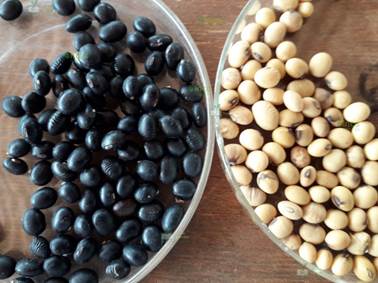Mi SciELO
Servicios Personalizados
Articulo
Indicadores
-
 Citado por SciELO
Citado por SciELO
Links relacionados
-
 Similares en
SciELO
Similares en
SciELO
Compartir
Cultivos Tropicales
versión On-line ISSN 1819-4087
cultrop vol.42 no.4 supl.1 La Habana 2021 Epub 30-Dic-2021
Report of new cultivar
CUVIN-22. Soybean (Glycine max Merril) black bean cultivar
1Instituto Nacional de Ciencias Agrícolas (INCA), carretera San José-Tapaste, km 3½, Gaveta Postal 1, San José de las Lajas, Mayabeque, Cuba. CP 32 700
Seeds of soybean variety DT-22 were irradiated with 60Co gamma rays at the National Institute of Agricultural Sciences. A black-grain, high-yielding cultivar was selected for spring-summer planting.
Key words: selection; mutant; grain color; variety; yield
INTRODUCTION
Although the hybridization breeding method has been widely used in soybean, mutation induction has proven to be effective because it is easier, reduces the time required to obtain a new variety and it is capable of generating variations that do not exist in the available germplasm, and soybean mutants have been reported in several countries around the world.
METHODOLOGY USED
Seeds of variety DT-22 from the Agricultural Genetics Institute of Vietnam (AGI) were irradiated with 60C0 gamma rays in a MPX-25 machine with a dose power of 5.8 Gy sec-1. A mutant with black grain and good agronomic performance was identified in the M3 generation.
DESCRIPTION OF CULTIVAR
The CUVIN-22 cultivar is characterized by black grains as opposed to the donor variety with cream-colored grains (Figure 1), reaches a height of 100 to 120 cm, and has five to seven branches per plant, a cycle of 80 to 85 days with white flowers. The number of pods per plant ranges from 150 to 290, with a yield of 2.8-3.6 t ha-1. This cultivar has a good cutting height, so it can be used for mechanized harvesting. This mutant has been evaluated in Mayabeque and Matanzas with good acceptance by producers.
Received: November 26, 2019; Accepted: April 27, 2021











 texto en
texto en 



